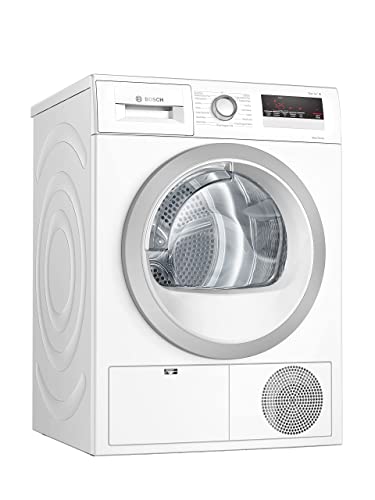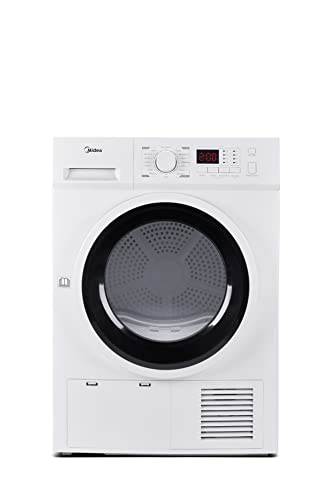See What Washer Dryer Heat Pump Tricks The Celebs Are Using

Filomena
2024-05-17 14:15
27
0
본문
 Why Buy a Washer Dryer Heat Pump?
Why Buy a Washer Dryer Heat Pump? If you're seeking a complete washer/dryer look into a heat pump model. These ventless models take a bit longer to dry and consume more energy than traditional vented dryers but they are much quieter and do not require ducting or ventilation.
If you're seeking a complete washer/dryer look into a heat pump model. These ventless models take a bit longer to dry and consume more energy than traditional vented dryers but they are much quieter and do not require ducting or ventilation.The machines utilize a heat pump tumble dryer pump loop to circulate the air and recirculate the water out of the clothes back into the drain tube. Learn more about the technologies behind these energy efficient STAR certified machines.
Evaporative Drying
Evaporative drying removes moisture from your clothing by using hot air to evaporate the water. It takes longer to evaporate than dryers that use heat. However as NYC shifts towards a half-natural gas energy mix and more renewable sources of energy over the next 10-20 year, you can expect an increase in the efficiency of your dryer. In the case of a washer dryer heat pump the use of electricity is to draw heat from the air and convert it into the heat needed for evaporation. This means that they use less energy than traditional dryers.
A heat pump dryer functions similar to a conventional dryer however, it is equipped with the components of an air conditioning refrigeration system (evaporator and condenser). The cooling section of the refrigerant cycle used to dehumidify dry air, which then flows through the evaporator in the heat pump. The dryer then heats dry air that has been dehumidified to provide drying heat.
This process generates lots of condensation water that has to be discarded. This can be done manually with the draining hose or a device that directs water flow from the airflow into the tub or sink in the laundry room. Researchers have investigated the efficiency of heat pumps in drying processes. They have focused on assessing their performance in relation to dehumidification. A good method for this is exergy analyses. Exergy analysis compared the efficiency of a process with its ideal performance. This can be calculated by determining the amount of energy needed to achieve the desired results in the process.
Ideally, the process should produce energy equal to or greater than the input, however this isn't always feasible, especially in a heat pump dryer. This is due to the fact that a certain amount lost heat from vaporization could also be included in the energy generated by the process of evaporation.
Researchers have investigated the performance of a heat-pump dryer using a computer-generated simulation. This study suggests that the energy efficiency of for a heat pump dryer is dependent on its dehumidification power and the temperature of the air in the unit's evaporator, as well as the ratio between dry and recirculating air.
Drying of Water Condensation
If you're looking for a method to dry your clothes more environmentally friendly than traditional dryers, you can purchase washer dryer heat pumps that make use of water condensation. These units are usually more expensive, but they can be less expensive to run.
The majority of combination washer-dryers utilize condensation drying. They function like regular tumble dryers except they heat and cool air that is pulled from the clothes in such a way that the moisture in it turns into water, and then drains away. The cool air is then returned to the drum, where it's heated and evaporated until the clothes are dry.
These dryers use less energy than older gas or electric dryers, however they are still more expensive to run than standard models. The dryers must be heated to allow the air in order to vent it out.
This can be greater than the energy used by the unit itself, so these washer/dryers are best suited to homes that have low electric costs.
If your laundry room has a window you can save more money by connecting the dryer directly to an outside drainpipe. This is called ventless dryer.
If you opt for a dryer with this feature, make sure to connect the hose correctly. You'll find the connector for the hose on the bottom of the appliance. In most cases, you'll see a holder beside it. Remove the existing hose and then place the new hose in the holder. The hose should not hang longer than 10cm inside the holder, as it could become disconnected from the dryer.
Ventless Dryers
Ventless dryers are an excellent option for NYC homeowners who reside in homes or Washer Dryer Heat Pump apartments that aren't compatible with traditional vented dryers. The appliances are more energy-efficient and use less gas when compared to vented dryers. They save money over the long term. They are also smaller and don't require an external vent or duct. You can install an air-conditioned dryer in your laundry or anywhere else within the home.
Ventless dryers dry clothes using two methods: either air-toair condensation or cool-water condensation. They draw heat from the air and transfer it to the clothes inside the drum, which means they are more efficient in energy than vented dryers.
They are gentler on fabrics because they don't depend on hot-air to dry your clothes. This is important as excessive heat can damage delicate fabrics and cause fading or running, particularly if the garments are made from synthetic materials.
Additionally it is true that a heat pump dryer is more efficient than a condensing dryer in terms of energy consumption. This is because they utilize an evaporator that absorbs the moisture that is emitted by the air inside the drum, and they convert it into water. This is a closed loop system, so they do not produce any waste.
The only thing you need to keep in mind with these appliances is that they require regular maintenance to ensure optimal performance. They must be cleaned and emptied regularly of any condensed liquid. Some models come with an internal reservoir of water that needs to be emptied regularly, whereas others are connected to a plumbing drain so the water can be flushed away automatically. To ensure the efficiency and effectiveness of the appliance the lint filter must be cleaned on a regular basis.
Energy Efficiency
It makes sense that laundry rooms seek ways to reduce their utility use, especially when the cost of energy is so high and no relief in sight. The replacement of a standard dryer with a washer heat pump can dramatically reduce energy bills and protect the environment.
These systems draw air from outside and use a refrigerant in order to extract heat from it. It is then pumped through a heat exchanger before being converted to heat that is used to dry clothes. The heat is then transferred to the drum of the dryer and then used to power the entire process. It is also used to heat water used for washing. The dryer then uses that hot water to power the spin cycle, further reducing the energy use and reducing costs.
This system operates in two closed cycles, one for the air and another for the refrigerant. The first uses a fan to blow warm, outside air over a set fins on the cold side of the heat pump, which captures heat energy and carries it away through coils on the cold side. The air is then blown over the fins on the hot side to soak up more energy. This process continues throughout the drying cycle.
When the air is saturated by heat pump tumble dryers, it passes through a second set of coils on the cold side of the pump, and turns into a liquid. This liquid is then moved through a compressor which increases its temperature and turns it back to a gas. The liquid is then pumped through the dryer where it evaporates and dries clothes.
The hot air is blown out of the dryer, which reduces the energy consumption by a significant amount. The only remaining energy comes from the motor that drives the drum of the dryer, which requires a relatively minimal amount of energy throughout the day.
In comparison to traditional dryers, that have an Energy Star rating of around 4.3 They can be as much as 28 percent more efficient. This is partly due to the fact that these dryers don't require vents and can operate at the same temperature as your central heating system. In addition the absence of a dryer vent eliminates the need for ductwork which lowers the cost of installation and improves overall energy efficiency.







댓글목록0
댓글 포인트 안내